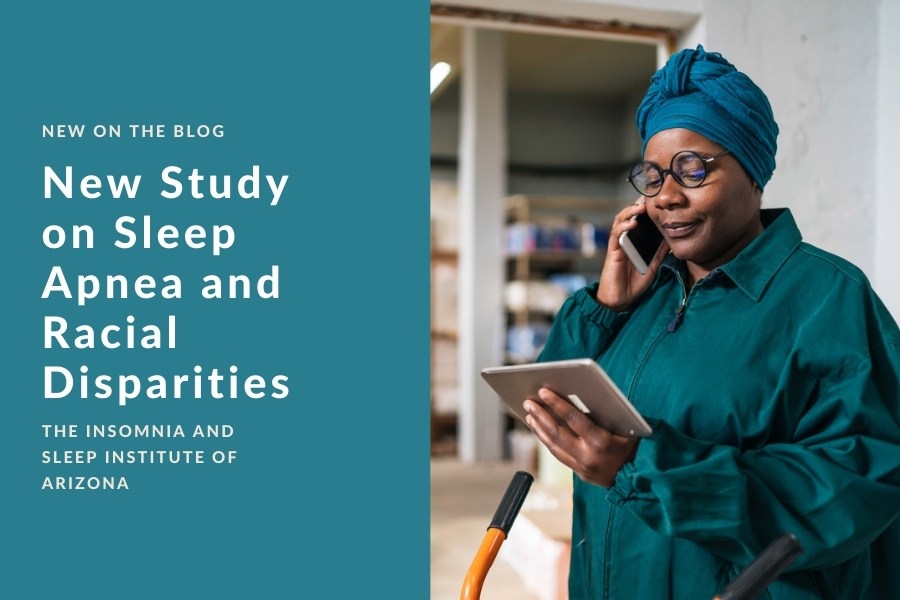A number of studies have shown a correlation between race and instances of obstructive sleep apnea (OSA). OSA is the most common type of sleep apnea and one of the most common sleep disorders—both diagnosed and un-diagnosed. The Insomnia and Sleep Institute of Arizona treats all types of sleep disorders with unparalleled staffing levels. We set the standard in sleep medicine in Arizona and are proud to be home to founder, triple board-certified Dr. Ruchir P. Patel who has been voted “Top Doc” in the area for the last six years. If you are struggling with OSA or suspect that you have it, the quicker you get treatment the sooner you can stave off or treat the many co-morbidities that often accompany it. Bear in mind that those who are BIPOC are both likelier to have OSA and more likely to not be diagnosed.
According to a recent 2022 study from the University of Buffalo, in the last 20 years more Black men have died of OSA compared to Black females as well as white people of all genders. Unfortunately, death rates of Black men from OSA continue to climb, which is in sharp contrast to Black women and white people whose rates of death from OSA have plateaued for some time now. The study is the first to indicate a “significant racial health disparity in mortality resulting from sleep apnea,” according to researchers. The full findings can be found in the February 2022 edition of Sleep Medicine.
OSA and Black Men
The lead author from the Jacobs School of Medicine reports, “Despite several epidemiologic studies focusing on the prevalence, risk factors, and clinical presentations of sleep apnea, no study, to our knowledge, has evaluated the disparity of sleep apnea-related mortality among different racial groups.” While numerous studies have considered who experiences OSA the most often, and there are certainly racial correlations, the mortality of OSA in regards to race has been overlooked. This led to the researchers considering data from 1999 – 2019, comparing Black and white people in America.
Using information from the National Center for Health Statistics, which was provided by the Centers for Disease Control and Prevention, researchers began analyzing trends in the last 20 years related to OSA and death rates. What they found was a “steady increase” in mortality between 1999 – 2008, but at that point the rates “flattened” for whites and Black women. The researchers say that both public health interventions and increased medical management were the cause for this plateau. However, Black males alone continued to experience increasing death rates for all 21 years of the study.
Getting OSA Under Control
Why are Black men the only group who are still dying at increasing rates from OSA? The researchers point to a variety of factors, but particularly point to the lack of compliance with CPAP therapy. They say, “The literature suggests that compliance with CPAP is lower in patients who are Black, are of lower socioeconomic class, and may have lower health literacy … it is extremely likely that the deaths occurred because the subjects were untreated or poorly compliant with therapy.” CPAP has long been the gold standard in managing OSA, and is in fact required before any patient can be considered for more invasive alternatives such as implants.
However, CPAP therapy is of course not effective if it is not used every time a person sleeps or not used correctly. The researchers stress that “CPAP therapy is highly effective and very few deaths, if any, would be expected if the subjects were adequately treated, followed, and were able to use the therapy.” The researchers also point to clinicians as being central to making sure this happens. A lot of people stop using CPAP or don’t use it correctly because of ill-fitting equipment or not being matched with the right equipment from the start. Something as simple as changing or adjusting a mask can make the difference between life and death.
You and CPAP
According to this study, there was also a “remarkable” geographic disparity when it comes to sleep apnea mortality. The highest mortality rates were in the Midwest while the lowest were in the west and northeast. Researchers also looked at diagnosis statistics—and found that Black people experience less success with OSA treatment even when they are diagnosed (as many people of all races and ethnicities go undiagnosed). However, if you have or think you have OSA, there are life-saving options available. Seeking out a correct diagnosis from leading sleep experts is the first step in proper management. Connect with The Insomnia and Sleep Institute today by giving us a call or completing the online contact form.





